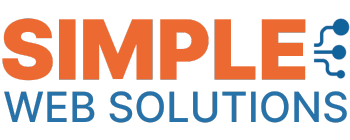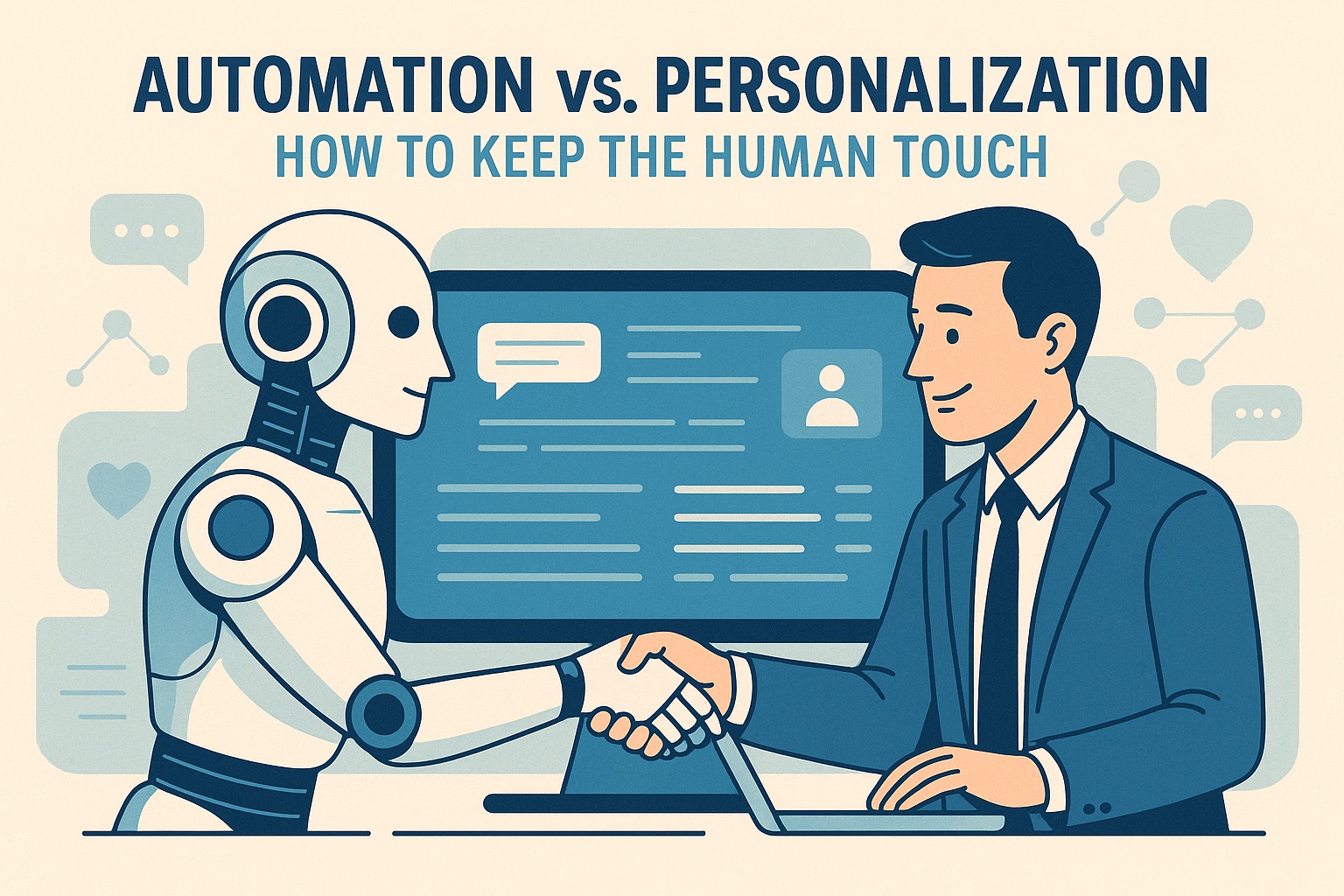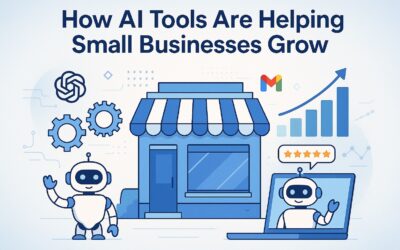Can your service company truly save hours with technology while keeping the personal connections that build customer loyalty? This question haunts many local contractors and technicians as digital tools reshape how they operate. The answer isn’t about choosing between efficiency and humanity—it’s about weaving them together.
Recent studies reveal a surprising trend: teams using smart workflows aren’t just cutting costs—they’re reinvesting saved time into deeper client relationships. For example, roofers now automate appointment reminders to focus on customized repair plans. HVAC specialists use AI-powered scheduling to spend more hours advising homeowners on energy efficiency.
The secret lies in strategic implementation. Tools should handle repetitive tasks like review collection or invoice tracking, freeing experts for hands-on consultations. When done right, technology becomes the silent partner that amplifies—not replaces—the expertise customers value.
Key Takeaways
- 92% of industry leaders plan to adopt advanced digital workflows by 2026 (IBM)
- Saved time from streamlined processes often fuels new customer-focused activities (McKinsey)
- Critical human interactions thrive when repetitive tasks are handled automatically
- Local service providers gain competitive edges through balanced tech-human strategies
- Successful implementation requires identifying which tasks to standardize versus personalize
Table of Contents
Understanding Business Automation
Imagine a roofing contractor finishing estimates in half the time. How? By letting tools handle paperwork while they focus on storm-damage assessments. This shift defines modern efficiency—where technology handles the predictable, freeing experts for complex problem-solving.
From Clunky Systems to Smart Solutions
Early digital tools required specialized teams and bulky hardware. Today’s cloud platforms let HVAC technicians automate scheduling from their trucks. Accessible interfaces now turn hours of admin work into minutes, letting service pros reinvest saved time into client education or emergency response planning.
Operational Gains That Matter
Three critical improvements emerge when companies adopt smart systems:
- Faster processing for estimates and permits
- Error-resistant record-keeping across projects
- Uniform service quality during peak demand
An HVAC specialist might use automated reminders to reduce missed appointments by 40%, while still personalizing maintenance tips for each home. Tools manage scheduling and invoice tracking, but never replace the nuanced advice clients expect from trusted experts.
“The right tech stack acts like a skilled apprentice—handling grunt work so masters can perfect their craft.”
This balance lets local service providers scale operations without diluting what makes them indispensable: human expertise applied where it matters most.
The Intersection of Automation and AI Trends
Picture a plumbing team resolving 30% more emergency calls daily. Their secret? Smart systems that analyze past jobs to predict where pipe bursts might occur next. This fusion of human skill and algorithmic foresight defines today’s service industry breakthroughs.
AI-Driven Enhancements in Workflow
Modern tools now digest customer reviews to spot recurring complaints—like inconsistent water pressure—and flag them before the next service visit. Unlike rigid rule-based systems, these solutions adapt using real-world data. For instance, Simple Web Solutions’ review analysis tools automatically highlight patterns needing urgent attention.
Machine Learning and Its Impact
Algorithms trained on years of service records can now predict when HVAC filters need replacement or roof inspections become critical. One Midwest roofer reduced callback rates by 22% after implementing learning-based scheduling that accounts for weather trends and material availability.
| Task Type | Traditional Approach | AI-Enhanced Approach |
|---|---|---|
| Customer Communication | Manual follow-ups | Personalized tips based on usage data |
| Service Scheduling | Fixed time slots | Weather-adjusted appointments |
| Lead Prioritization | First-come basis | Urgency scoring using artificial intelligence |
“Generative AI doesn’t just automate tasks—it reimagines how we anticipate needs.”
With 87% of industry leaders backing these trends, forward-thinking companies now blend artificial intelligence with field expertise. The result? Faster response times and clients who feel genuinely understood.
Balancing Automation and Personalization
What if your clients never noticed the robots working behind the scenes? Top service providers now blend digital efficiency with genuine care, creating experiences where technology supports—never overshadows—human expertise.
Maintaining the Human Touch in Digital Processes
Smart systems handle repetitive work like appointment confirmations, freeing technicians for tailored consultations. A Midwest plumbing company reduced callback rates by 18% after implementing learning-based alerts that flag aging water heaters. Staff then personally call homeowners to discuss replacement options.
| Interaction Type | Traditional Method | Enhanced Approach |
|---|---|---|
| Post-Service Follow-Up | Generic email blast | Video message from technician |
| Emergency Scheduling | First-come phone queue | AI triage with callback promises |
| Maintenance Reminders | Printed mailers | Text with personalized tips |
One HVAC team uses digital workers to analyze furnace runtime data. When irregular patterns emerge, the system prompts human specialists to schedule safety inspections. “Our clients think we’ve hired more staff,” says the owner. “Really, we’re just working smarter.”
Case Studies of Personalized Interactions
Denver roofers transformed their review process using sentiment analysis tools. The system flags dissatisfied customers within hours, triggering personal calls from managers. Customer retention jumped 27% in six months.
Another example: electricians now pair automated service reminders with handwritten notes about home energy savings. This mix of scalable processes and individualized care builds trust while maintaining efficiency.
Key Components and Tools for Effective Automation
How many hours does your team lose to paperwork that could fuel customer connections? The right systems transform tedious tasks into strategic advantages. For service pros, two technologies lead this charge: robotic process automation and business process management.
Robotic Process Automation (RPA) and BPM
RPA acts like a digital apprentice for repetitive office work. It handles data entry, invoice matching, and permit applications with machine precision. One plumbing company cut billing errors by 73% using these tools to cross-check supplier invoices against project records.
BPM takes a wider view, optimizing entire workflows. Imagine roofers tracking material deliveries through automated alerts that adjust schedules based on weather delays. These systems ensure consistency while allowing human flexibility where it matters most.
- RPA excels at rule-based tasks: form processing, file transfers
- BPM maps complex workflows: permit approvals, quality checks
- Combined, they reduce processing time by 58% (Forrester)
Selecting the Right Automation Software
Choose tools that grow with your operation. Key considerations:
| Feature | Why It Matters |
|---|---|
| Drag-and-Drop Builders | Let technicians modify workflows without coding |
| Native Integrations | Connects to QuickBooks, ServiceTitan, etc. |
| Mobile Access | Update systems from job sites |
Top solutions offer pre-built templates for common processes like equipment maintenance tracking. A Midwest HVAC team customized one in 90 minutes—no IT help needed. As one owner notes: “Our software adapts to how we work, not the other way around.”
Prioritize platforms with real-time analytics. These dashboards help managers spot bottlenecks in project timelines or resource allocation. When tools align with field realities, they become silent partners in growth.
Real-World Applications for U.S. Service Industries
What separates thriving service providers from overwhelmed ones? Strategic digital adoption. Roofers, plumbers, and HVAC teams now leverage specialized software to tackle industry-specific hurdles—from 3 AM emergency calls to permit approval bottlenecks.
Digital Strategies for Trade Professionals
Modern solutions address unique field challenges:
- Roofers use weather-responsive scheduling systems that adjust timelines based on storm forecasts
- Plumbers deploy AI-powered dispatch tools that prioritize burst pipe emergencies over routine maintenance
- HVAC teams automate seasonal maintenance reminders tied to local pollen counts
One Denver plumbing company reduced overtime costs by 31% using software that predicts call volumes based on historical data. “Our systems handle the guesswork,” says owner Mark Tessler. “We focus on solving problems, not tracking them.”
Streamlining Reputation and Growth
Review automation tools now curate testimonials while protecting brand image. For example:
| Challenge | Traditional Approach | Automated Solution |
|---|---|---|
| Feedback Collection | Manual email requests | Post-service SMS with review links |
| Negative Reviews | Public arguments | Private resolution workflows |
| Lead Conversion | Cold calling | Behavior-triggered email sequences |
HR management gets smarter too. Payroll systems auto-calculate overtime for field crews, while certification trackers alert managers about expiring licenses. As American Express found, 68% of owners crave time savings—these tools deliver precisely that.
By blending specialized software with human expertise, service pros maintain the personal touch while scaling efficiently. The result? Faster response times, happier clients, and teams focused on their craft—not paperwork.
SEO Optimization and Personalized Digital Experiences
Visibility in search results now demands more than basic keywords. Forward-thinking service providers combine technical precision with human-centric strategies, using tools that adapt to how local clients search. This approach turns online searches into booked appointments while maintaining authentic connections.
Mobile-First Design and Keyword Targeting
Over 60% of service inquiries start on phones. Responsive websites built with data-driven layouts ensure fast loading and easy navigation. Simple Web Solutions integrates location-specific phrases like “emergency HVAC repair [City]” directly into page titles and meta descriptions through smart tools.
Schema markup acts as a digital translator for search engines. When roofers embed job completion dates and service areas into code, Google displays detailed local snippets. This technical edge pairs with content that answers real questions—like “how often should gutters be cleaned?”—to boost relevance.
Local SEO Strategies for Service Pros
Neighborhood-focused campaigns thrive on consistency. Optimized Google Profiles with verified hours and services appear 29% more often in “near me” searches. Automated review requests sent post-service keep profiles fresh with genuine feedback.
Hyperlocal content seals the deal. Electricians might create neighborhood guides on energy-saving upgrades for historic homes. These resources, paired with email campaigns highlighting seasonal offers, position teams as community experts rather than distant vendors.
By aligning marketing efforts with how people actually seek help, service providers craft digital experiences that feel personal—even when powered by intelligent tools. The result? Higher search rankings that translate into warmer leads and lasting trust.
FAQ
Can automation tools like Zapier or HubSpot handle customer interactions without feeling robotic?
Yes. Platforms like Zendesk and Intercom use AI to personalize responses while maintaining efficiency. For example, chatbots can route complex issues to human agents, ensuring a balance between speed and empathy in customer service workflows.
What’s the simplest way to start automating repetitive tasks for a small team?
Begin with tools like Trello for project management or Calendly for scheduling. These require minimal setup and integrate with existing systems like Gmail or Slack, letting teams focus on high-value activities without overhauling workflows.
How do AI trends like machine learning improve local SEO for service businesses?
Tools like BrightLocal use AI to analyze keywords and optimize Google Business Profiles. For roofers or HVAC companies, this means automated review monitoring and smarter targeting of location-based searches to boost visibility.
Will robotic process automation (RPA) replace human roles in HR or payroll?
No. Tools like BambooHR automate data entry and benefits administration but still require human oversight for decision-making. This reduces errors in payroll processing while freeing HR teams to focus on employee engagement.
How can service industries maintain personalized outreach when using email automation?
Platforms like Mailchimp allow dynamic content insertion based on customer behavior. A plumbing company could send tailored maintenance reminders with localized offers, blending automation with a human-centric approach.
What’s the biggest risk of over-automating sales or marketing processes?
Losing brand voice consistency. For instance, overusing ChatGPT-generated content without editing can dilute messaging. Tools like Grammarly Business help maintain tone while scaling content production for blogs or social media.





0 Comments